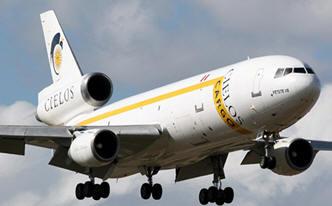|
Safety:
Safety is the industry’s top priority and a constant challenge.
Safety in Latin America had improved, but challenges remain. For the
first six months of 2010, the accident rate in
Latin America was three times higher (1.98 Western-built jet
hull losses per million flights) than the 0.64 global average. Five
governments in Latin America (Brazil, Chile, Costa Rica,
Panama and Mexico) have
endorsed the IATA Operational Safety Audit (IOSA) in their safety
oversight programs. “The
most fitting tribute to Jorge Chávez would be for
Peru
to make IOSA a requirement in
Peru. And I encourage Peru to be a
leading voice in making IOSA a requirement for all aircraft flying to,
from and within the region,” said Bisignani.
Infrastructure and
Taxes: IATA is working with
the DGCA in Peru
to introduce more efficient approach and departure procedures at Peru’s main
airports. New procedures
have already been introduced in
Cuzco, which have reduced the number of flight
cancelations and diversions.
IATA is working to bring those same changes to
Lima, which could shave 10 minutes off flight
times. “Aviation can only
perform its vital role as an economic catalyst if the infrastructure is
efficient. While we work together to improve infrastructure and
competitiveness, I encourage Peru to review its $18 million in
charges for fuel uplift. And Peru
must address its complex taxation structure that sees it ranked 74th in
the World Economic Forum’s Travel Competitiveness Index, behind Chile (57) and Brazil (45),” said Bisignani.
Liberalization:
Peru can take a
leadership role in the region by working to liberalize ownership and
open air service links with other countries and better integrate
economies. In Peru alone, liberalization of market
access and ownership would generate 77,000 jobs and boost GDP by $3.2
billion. “There is a leadership opportunity for
Peru
in supporting an open aviation area in Latin
America
through the Latin American Civil Aviation Commission (CLAC),” Bisignani
said.
Environment:
Aviation has a solid track record on climate change with constant
attention to reducing both fuel burn and emissions.
IATA is leading united industry efforts to improve fuel
efficiency by 1.5% per year to 2020, cap emissions from 2020 with carbon
neutral growth and cut emissions in half by 2050 compared to 2005. For
example, IATA helped shorten a route between Lima
and Madrid,
which is saving 400,000 kg of CO2.
“The 22 CLAC states—including
Peru—have made two important
commitments on aviation and climate change. The first is to confirm
support for a global solution for aviation on climate change under the
International Civil Aviation Organization (ICAO). The second is the
endorsement of the industry targets. I hope that Peru will be a strong voice
supporting these commitments at the upcoming ICAO Assembly,” said
Bisignani.
“Peru
has played an important role in the Latin American aviation success
story of delivering profitability, improving safety and developing
innovative business models. In
the coming months we will be preparing for our Vision 2050 summit.
We will look ahead 40 years to see what is needed for our
industry to be sustainable. The Latin American experience will make an
important contribution to that discussion. And the legacy and courage of
Jorge Chávez will be among the inspirations for our forward-looking
vision,” said Bisignani. |



